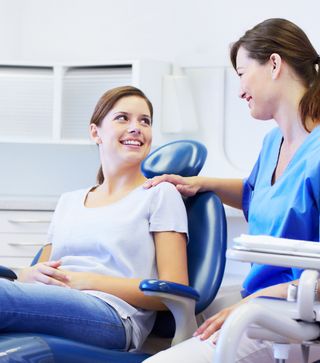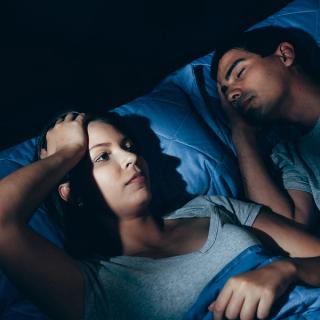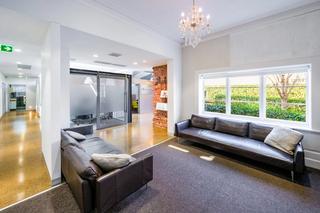
Snoring is not normal and it can be a very serious medical issue. Snoring has been reported to affect some 40% of the adult population and it is a major red flag. In an alarming 40% of snorers, it could be an early sign of Obstructive Sleep Apnoea (OSA).
OSA is basically varying degrees of blockage of airflow, so that you actually stop breathing in and out. In this circumstance, the best case scenario is that your brain tells you to wake up (often without knowing you've woken up) and you take a deep breath. The effect of this systemic stress on the body is extraordinary and can ultimately result in death.
The good news is an assessment of OSA is relatively straight forward.
What Causes Snoring?
Snoring is the noise that occurs when there is partial obstruction and subsequent vibration of the soft tissues at the back of the throat. As snorers drift off to sleep, the tongue, soft palate, uvula and muscles of the throat drop to the back of the throat and obstruct the airway.
In many cases the obstruction is minor and the individual is able to overcome the obstruction. These individuals may have poor quality sleep which may result in excessive daytime sleepiness.
Obstructive Sleep Apnoea (OSA)
Sometimes more severe obstructions occur, and this condition may be diagnosed as Obstructive Sleep Apnoea (OSA).
Patients with Obstructive Sleep Apnoea actually stop breathing. As a result, there is no airflow.
Oxygen levels can become lowered to the point where your brain tells you to wake up and take a breath, (often with a long, loud gasp) before the cycle repeats again.
Often, the snorer does not even know that they woke up!
Since Geelong Smile Studio has commenced screening for OSA, we have found some people repeating this ‘stop-wake up-breathe’ cycle up to 100 times per hour!
One patient was referred to a medical sleep specialist and was confirmed whilst sleeping to be obstructed from breathing for up to 60 seconds at a time.
Try doing that whilst awake!
If your body has been ‘fighting’ to get oxygen all night, do you think it has rested?
We recommend patients with OSA look further into Sleep Therapy.
Diagnosis of OSA
By looking for several positive predictors within your mouth and asking several questions in relation to your medical history, a dentist trained in sleep medicine, within minutes, can provide you with a very strong idea of whether or not you are likely to have OSA.
Just like a doctor will assess your blood pressure prior to prescribing anti-hypertensive medications, the diagnosis of OSA requires confirmation with a sleep study (polysomnogram) prior to prescribing the treatment.
Treatment for OSA
Severe OSA is a serious medical issue and treatment will be supervised by the Sleep Physician.
This treatment may involve assistance with night time breathing using a machine that provides continuous positive airway pressure (CPAP).
Surgery may be considered in the most severe cases.
In mild to moderate cases of OSA, a sleep appliance can be made by a dentist and is worn over the teeth.
This appliance acts to hold the lower jaw and tongue forward and thus maintains an open airway whilst sleeping.
Referral for Sleep Study
At Geelong Smile Studio, if we believe you could have OSA, you will be referred to a Sleep Physician (respiratory specialist) where a sleep study will be arranged.
The severity of the diagnosed OSA will determine the treatment prescribed.
If you suspect you may have OSA or your bed partner reports that you snore, gasp for air, or sleep restlessly, then the best decision you will ever make will be to talk to a suitably trained clinician.
Your life and other people's lives may depend on it.

Obstructive Sleep Apnoea For Sleep Therapy Geelong
Some Statistics
- The average age of death of untreated sleep apneics is 55 years!
- Sleep apneics have a 15% higher mortality rate than the general population.
- There is an increased risk of elevated blood pressure (hypertension).
- There is a greater incidence of cardiac arrhythmias and higher cholesterol.
- Compared to the general population, people with OSA have a 23% greater chance of a heart attack.
- There is a significantly greater chance of suffering a stroke (65-80% of stroke patients have OSA).
- 15% of OSA patients have diabetes compared to only 3% in the general population.
- OSA is more prevalent than diabetes and asthma in our population.
Weight Gain
If you are not sleeping well, it is extremely difficult to lose weight since your body does not achieve stabilisation of the circulating hormones (leptin and gherlin) that regulate hunger.
In a recent series of The Biggest Loser in USA, all contestants had OSA.
Obesity is the dominant factor in 50% of cases of OSA
Other Complications Associated with OSA
- OSA lowers the threshold to depression.
- Menstrual irregularities.
- Impotence and decreased libido.
- Heartburn.
- Impaired concentration and learning difficulties.
- 3 times more likely to have a car crash causing serious bodily harm.
- Irritability.
- Teeth grinding.
- Morning headaches.
Sleepiness
A fantastic questionnaire developed by the Epworth Hospital in Melbourne is the Epworth Sleepiness Scale. It is a quick and simple guide to be used to grade your level of sleepiness.
Remember, the partner of a snorer will lose on average 90 mins (1.5 hours) of sleep per night!
Don’t you (at least) owe the gift of sleep to your most loved one? (Snoring is a leading cause of divorce.)
At Geelong Smile Studio we are passionate about the health and well being of our patients. We are highly trained in the indicators of Obstructive Sleep Apnoea.
Following a thorough history and dental examination we will assess the need for a referral to Sleep Physician.
The formal diagnosis of obstructive sleep apnoea (OSA) can only be made using a polysomnogram which is ordered by a sleep physician.
If you were screened and assessed to have moderate or severe sleep apnoea, then you will be immediately referred to a medical sleep specialist.
The following treatment may then be recommended:
Improving Sleep Hygiene
Sleep Hygiene can be improved by:
- Avoiding sleeping on your back
- Avoiding alcohol 2 hours prior to bedtime
- Losing weight
- Avoiding central nervous system depressants
- Quitting smoking
- Elevating the head of the bed
- Using anti-snore pillows
CPAP- Continuous Positive Airway Pressure
CPAP is the most effective treatment for patients with moderate to severe obstructive sleep apnoea, if it is properly used.
Patients using a CPAP machine wear a mask while they sleep. The mask is connected by a hose to the machine.
Unfortunately, many patients find that the face mask and the hose to the machine are cumbersome and intrusive to use.
As a result, there is a major problem with compliance for this treatment.
If patients have tried and are unable to wear a CPAP, then treatment with an oral appliance may be recommended.

Oral Appliances Mandibular Advancement Devices (MAD)
Mandibular Advancement Devices (MADs) are often the preferred treatment for snorers and people diagnosed with mild sleep apnoea.
In addition, recently MADs have been shown to be a useful adjunct to CPAP in the treatment of severe and super severe obstructive sleep apnoea.
These customised appliances work by holding the lower jaw in a forward and open position, therefore preventing the tongue and soft tissues of the throat from dropping back into the airway.
Several different types of MADs can be considered for use such as the TAP appliance, SUAD appliance and OASYS appliance.
The most commonly employed appliance at Geelong Smile Studio is the SomnoDent MAD appliance.
What to do about Sleep Apnoea
If you know you snore, if you have been told that you gasp in your sleep, if you feel flat and unrefreshed upon waking and then go searching for that caffeine jolt, or if you just keep falling asleep during the day...
Arrange a Sleep Consultation
The first step is to contact Geelong Smile Studio for a sleep consultation. Just by looking at you and asking several questions, we will have a fairly strong indication as to whether you will benefit from a home sleep study.
Home Sleep Study
Once you have undertaken the overnight screening sleep study in the privacy of your own bed, a further appointment will be made to discuss the findings of your sleep study.
If you have no sleep apnoea – fantastic, you know you are sleeping well and are systemically well.
Oral Appliance Therapy
If you are found to have mild sleep apnoea or if snoring has become a strain on your relationship with your bed partner, then you will be offered a Mandibular Advancement Device (MAD) to treat your snoring and apnoea.
The fabrication of the MAD appliance involves taking a simple impression of your upper and lower teeth. Then a registration of your bite will be taken and confirmed with the K7 instrumentation. (This will help to reduce the possibility of muscular soreness from wearing the device.)
Some three weeks later, a short fitting appointment will check the fit and comfort of the device.
Periodic adjustments will be required of the oral appliance.
Follow-up Sleep Study
Three to six months later, a follow up sleep study will be undertaken to ensure the success of the appliance.
Referral
If you have moderate to severe sleep apnoea, you have a medical issue and you will be referred to a medical sleep specialist.


